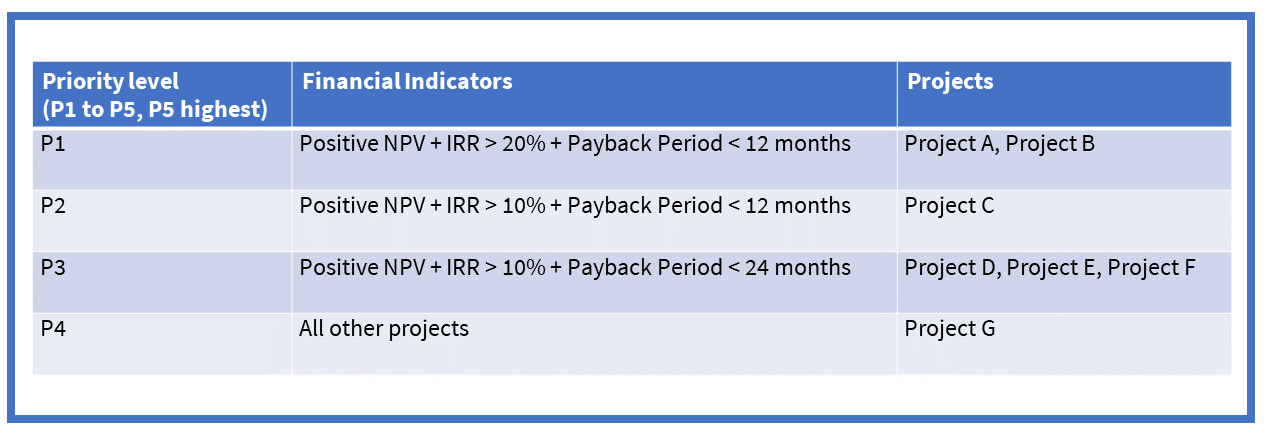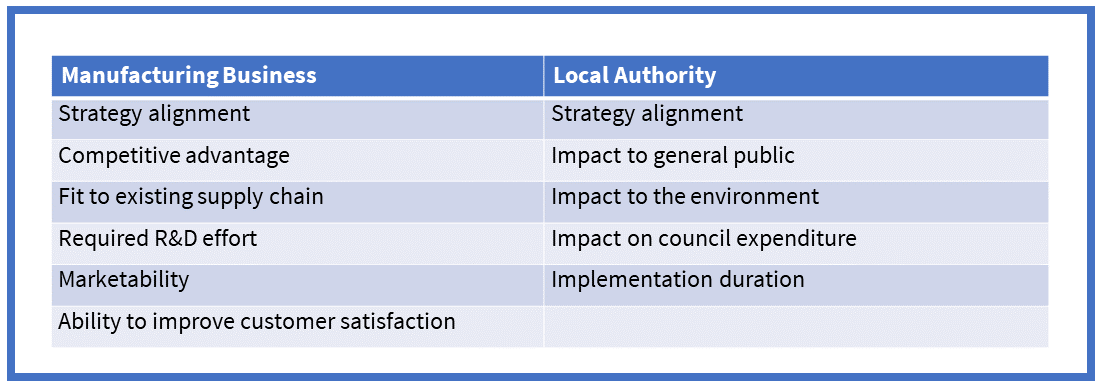Prioritize
As the word suggests, prioritizing is about ranking the projects and programmes within a portfolio. Unlike its literal definition, in portfolio management, prioritization also means de-prioritization. In other words, if there are ten initiatives within a portfolio, giving high priority to two or three among them automatically means some other initiatives needs to be given lesser importance. Again, prioritization criteria should be designed according to the strategic aims of the business.
This practice is part of the portfolio definition cycle.
Purpose
Prioritization ensures each project’s importance to the organisation is identified, for allocation of people and resources. Some projects may also get cancelled as a result.
Implementing
???
Single-criterion Analysis
First of all, a set of criteria need to be identified, which are sufficiently generic and applicable to all projects. Many organizations opt for financial indicators such as Net Present Value (NPV), Internal Rate of Return (IRR), Payback Period, Initial Investment etc. Financial criteria-based prioritization is popular as business leaders well-associate with financial figures.
Here is an example of how financial attractiveness can be used to prioritize projects:

It is not a necessity to use financial criteria at all. The organization can have its own set of criteria to determine how projects are prioritized. Prioritization can be based on customer impact, confidence of successful delivery or any other criterion suitable for the industry. An example of a prioritization criterion for a local government authority could be support for sustainable population growth.

In both examples above, there was only one criterion for prioritizing projects. Even in the first example, all financial information, such as NPV, IRR and Payback Period are just that – financial. This is called Single Criterion Analysis (SCA). While this is simple, it would be highly impractical, as no senior management would say the sole reason for the company’s existence is to earn money or the sole reason for the council’s existence is to plan for population growth.
Multi-criteria Analysis
Organizations usually require more than one criterion to prioritize projects. For example:

In this example, the manufacturing business have six criteria, while the local authority has five. There are no rules on the number of criteria for scoring. When more than one criterion is required for project prioritization, multi-criteria analysis needs to be used.
In multi-criteria analysis, each criterion is allocated a score. Thereafter, each project is assessed for its impact on each criterion. This is a simple mathematical calculation. However, it is not discussed in detail because it is not within the scope of this text.
Prioritization criteria should reflect the organizational and industry needs. Industry practices should always be analyzed, but at the end, the criteria should reflect the organization’s requirements. In fact, if a portfolio is segmented or if the portfolio contains sub-portfolios, then prioritization criteria can differ for each segment or sub-portfolio.
Deliverables
A prioritized list of change initiatives will be the result of the prioritize practice.
Written by Inham Hassen
This wiki is developed and managed by an accredited trainer, independent of AXELOS. While aligned with their guidelines, it’s not an official resource.